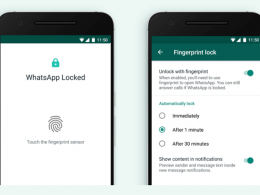It has come to everyone’s notice how the world is transforming at an exponential rate due to this digital age. Every aspect of how agencies perform and compete is considerably changed due to digitization. Enterprises are generating and storing an ever-growing quantity of records, which increases the demand for data management.
Computing environments also are increasingly complex than they used to be, often encompassing public clouds. This complexity is attracting and expanding the dynamics of cyber assaults. In short, your data can easily be breached.
There are many security tools available, but many are not considered relevant for most organizations. Deep Packet Inspection (DPI) has emerged as a powerful tool in this regard. It has aided in the complete evaluation of network traffic to check and prevent threats.
This article will discuss why DPI has become such a success and how it is important to your data security and privacy.
What is DPI?
Before understanding what DPI is, let’s understand what is meant by a data packet. Packets are small bits of data that carry information while traveling from one network to another. They have all the routing information along with metadata.
Deep Packet Inspection is a tool that analyzes information stored in data packets as they travel across networks. What DPI technology does is permit network administration to gain deep access to the networking traffic. It helps in analyzing security threats and identifies protocols that are being used.
Another significant aspect of DPI is content filtering and blocking. This is done by assessing the specific information stored in packets, like any keywords or patterns.
How does DPI operate?
DPI is an important tool for demonstrating where the threat has evolved from by checking out the information inside the data packets. There are different techniques used while utilizing DPI by different technical experts and managers. The list below demonstrates some of the DPI techniques that are used in the industry.
Pattern/ Signature Matching
This strategy basically identifies what sort of content is present inside the data packets. It searches for any kind of patterns or signatures that could be present due to any external threat. Once the threat is checked out, it stops the data from going through.
However, there are some limitations to this method. It only works well when the database of known attacks is regularly updated. Hence, if there is any unknown attack, it might not recognize it.
Anomaly Detection
It works completely differently than the signature matching technique. It is used to detect those threats which are unknown and do not have any specific pattern or signature. The method adopted for detecting unknown threats is “default and deny.” This strategy involves the analysis of different aspects of the networking traffic.
Intrusion Detection
As the name suggests, this technique also blocks any harmful data from sending. The procedure involves checking the contents of the packets and blocking them in real time if they are known to be a security threat.
However, there is one drawback. IPS needs to be regularly updated with information about new threats in order to be effective. The threat of false alarms is also a major concern, although it can be reduced by setting some standards and rules. Rules could be a regular review of warnings, improving monitoring and alerting, and also establishing basic behavior patterns for different network devices.
Higher precision with DPI
DPI is like a smart traffic cop for the network. It works by understanding the data traffic that flows through the network. This understanding allows network managers to better manage and allocate resources.
One of the main advantages of DPI is that it enables the implementation of Quality of Service (QoS) procedures. These procedures ensure that important applications and services receive the necessary bandwidth and minimum delay they require.
DPI also aids in reducing network congestion in locations. Administrators can learn more about the potential of DPI by taking proactive steps to reduce congestion and improve overall network performance.
Applications of DPI
We realize that the use of DPI has considerably increased and will continue to do so by the year 2030. Let’s discuss its domains in various applications.
● DPI is a crucial tool for tackling and fighting network-based attacks. It also helps in recognizing malicious traffic and assists in implementing effective security measures.
● Network administrators use DPI to filter and control the content accessible on a network. This is helpful as it enables the imposition of parental controls, blocks access to objectionable websites, and limits the use of specific programs.
● It helps in effectively managing bandwidth by classifying and identifying different types of traffic. It allows administrators to prioritize key applications and allocate the necessary bandwidth while controlling unnecessary traffic to prevent congestion.
● It plays a crucial role in implementing Quality of Service (QoS) methods. By understanding the type of traffic and its specific needs, DPI enables administrators to allocate resources based on priority. This ensures a positive user experience by delivering the required level of service for different types of traffic.
Are there any challenges related to DPI?
Like any technology, DPI has several downsides that should be taken into account. Privacy is one of the main issues. Deep packet inspection examines the content of your communications, which poses privacy concerns. Network supervisors must carefully strike a balance between the necessity for security and the protection of personal information. DPI must be utilized legally, responsibly, and with the appropriate security measures in place to preserve private data and user privacy.
The examination of encrypted traffic is another challenge with DPI. As encryption methods proliferate, DPI’s ability to decrypt communications is limited. To properly use deep packet inspection techniques and obtain visibility into encrypted communication, network administrators may need to use additional techniques, such as SSL decryption.
Lastly, DPI can also have a significant impact on your network performance. It means it can sometimes slow down your network. Hence in order to prevent a decline in overall network performance, the network infrastructure needs to be adequately prepared to handle the increased computing demands imposed by DPI.
Final Verdict
DPI is a technology that has incredibly helped in improving our network performance and protecting privacy. It has allowed us to closely examine network traffic, which helps us allocate resources effectively.
Although there are some difficulties associated with DPI, it is constantly evolving to address concerns related to encryption and performance. As our interconnected world expands, the significance of DPI in maintaining a secure and efficient network infrastructure will only increase.











